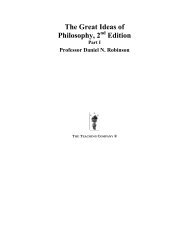English idioms in the first language and second language lexicon: a ...
English idioms in the first language and second language lexicon: a ...
English idioms in the first language and second language lexicon: a ...
Create successful ePaper yourself
Turn your PDF publications into a flip-book with our unique Google optimized e-Paper software.
Beate Abel 341The norm-<strong>idioms</strong> were extracted <strong>in</strong> order to form <strong>the</strong> basis for adirect comparison between native <strong>and</strong> nonnative judgements.Merg<strong>in</strong>g <strong>the</strong> data from Studies 1 <strong>and</strong> 2 was justified because of <strong>the</strong>great similarities between <strong>the</strong> two nonnative populations. Both <strong>the</strong>native <strong>and</strong> <strong>the</strong> nonnative group were large enough (56 <strong>and</strong> 169participants respectively) to be compared (Titone <strong>and</strong> Conn<strong>in</strong>e,1994: 255).The follow<strong>in</strong>g data refer to <strong>the</strong> 171 norm-<strong>idioms</strong>. As far as <strong>the</strong>dichotomous judgement decomposable–nondecomposable isconcerned, <strong>the</strong> native <strong>and</strong> <strong>the</strong> nonnative group show oppos<strong>in</strong>gtendencies: Whereas native speakers tend to judge <strong>idioms</strong> asnondecomposable (41.9% decomposable, 58.1% nondecomposable;Titone <strong>and</strong> Conn<strong>in</strong>e, 1994: 259), nonnative speakers tend to decompose<strong>idioms</strong> (52.6% decomposable, 47.4% nondecomposable).This tendency is streng<strong>the</strong>ned under <strong>the</strong> 75% agreement criterion:Nonnatives judge 26.3% of <strong>idioms</strong> (45) as decomposable <strong>and</strong> 20.5%(35) as nondecomposable. 53.2% (91) are uncategorizable under <strong>the</strong>75% agreement criterion. Native speakers judge 15.2% of <strong>idioms</strong>(26) as decomposable <strong>and</strong> 35.7% (61) as nondecomposable; 49.1%(84) are uncategorizable under <strong>the</strong> 75% agreement criterion(Titone <strong>and</strong> Conn<strong>in</strong>e, 1994: 259).The comparison between native <strong>and</strong> nonnative speakers showsthat <strong>the</strong> former tend to judge <strong>idioms</strong> as nondecomposable, whereas<strong>the</strong> latter tend to decompose <strong>the</strong>m. In both groups, speakers agree<strong>in</strong> <strong>the</strong>ir judgements on only about half of <strong>the</strong> <strong>idioms</strong>. Summariz<strong>in</strong>g,it can be stated that natives <strong>and</strong> nonnatives show similarjudgements as far as <strong>the</strong> overall distribution is concerned – under<strong>the</strong> 75% criterion both groups agree about only half of <strong>the</strong> <strong>idioms</strong>– whereas with regard to <strong>the</strong> decomposable–nondecomposableclassification <strong>the</strong>ir judgements differ. The DIR Model <strong>in</strong>terprets <strong>the</strong>differences <strong>in</strong> terms of different lexical representations <strong>in</strong> <strong>the</strong> L1<strong>and</strong> L2 <strong>lexicon</strong>.As far as familiarity <strong>and</strong> its relationship to decomposability under<strong>the</strong> 75% agreement criterion is concerned, <strong>the</strong> native <strong>and</strong> nonnativegroup show <strong>the</strong> same tendency <strong>in</strong> <strong>the</strong>ir judgements. However, <strong>the</strong>familiarity rat<strong>in</strong>gs given by <strong>the</strong> native participants are fairly close,whereas <strong>the</strong> nonnative rat<strong>in</strong>gs show a large range. Recall thatfamiliarity was measured on a 7-po<strong>in</strong>t scale. Po<strong>in</strong>t 7 <strong>in</strong>dicatedhighest familiarity, po<strong>in</strong>t 1 <strong>the</strong> lowest. In <strong>the</strong> native speaker group,<strong>the</strong> mean values were 5.92 for <strong>the</strong> 26 decomposable <strong>idioms</strong> <strong>and</strong> 5.76for <strong>the</strong> 61 nondecomposable <strong>idioms</strong>. This means that decomposable<strong>idioms</strong> are rated as be<strong>in</strong>g more familiar. The mean values <strong>in</strong> <strong>the</strong>nonnative group were 4.9 (45 decomposable <strong>idioms</strong>) <strong>and</strong> 2.99 (35nondecomposable <strong>idioms</strong>). This shows that <strong>in</strong> both groupsDownloaded from http://slr.sagepub.com at Shanghai Jiaotong University on March 7, 2009














